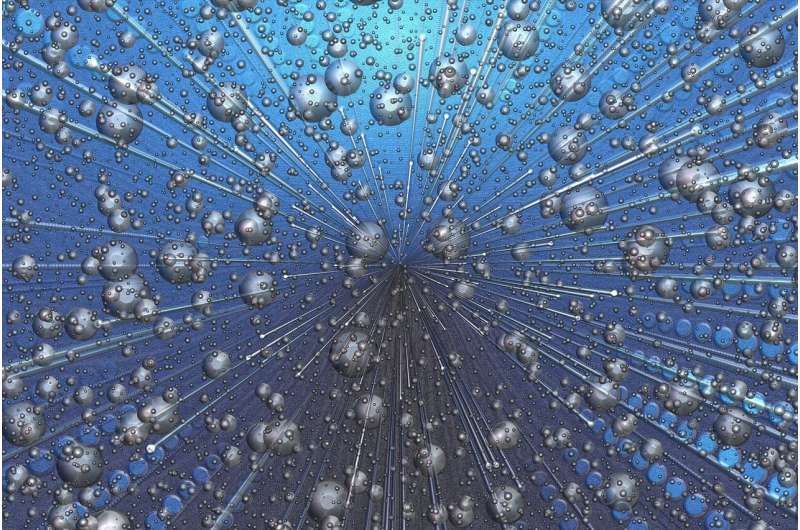Water and quantum magnets share critical physics

In physics, things exist in phases, such as solid, liquid and gas states. When something crosses from one phase to another, we talk about a phase transition—like water boiling into steam, turning from liquid to gas.
In our kitchens, water boils at 100 degrees C, and its density changes dramatically, making a discontinuous jump from liquid to gas. However, if we turn up the pressure, the boiling point of water also increases, until a pressure of 221 atmospheres where it boils at 374 degrees C. Here, something strange happens: the liquid and gas merge into a single phase. Above this "critical point," there is no longer a phase transition at all, and so by controlling its pressure, water can be steered from liquid to gas without ever crossing one.
Is there a quantum version of a water-like phase transition? "The current directions in quantum magnetism and spintronics require highly spin-anisotropic interactions to produce the physics of topological phases and protected qubits, but these interactions also favor discontinuous quantum phase transitions," says Professor Henrik Rønnow at EPFL's School of Basic Sciences.
Previous studies have focused on smooth, continuous phase transitions in quantum magnetic materials. Now, in a joint experimental and theoretical project led by Rønnow and Professor Frédéric Mila, also at the School of Basic Sciences, physicists at EPFL and the Paul Scherrer Institute have studied a discontinuous phase transition to observe the first ever critical point in a quantum magnet, similar to that of water. The work is now published in Nature.
The scientists used a quantum antiferromagnet, known in the field as SCBO (from its chemical composition: SrCu2(BO3)2). Quantum antiferromagnets are especially useful for understanding how the quantum aspects of a material's structure affect its overall properties—for example, how the spins of its electrons interact to give its magnetic properties. SCBO is also a "frustrated" magnet, meaning that its electron spins can't stabilize in some orderly structure, and instead they adopt some uniquely quantum fluctuating states.
In a complex experiment, the researchers controlled both the pressure and the magnetic field applied to milligram pieces of SCBO. "This allowed us to look all around the discontinuous quantum phase transition and that way we found critical-point physics in a pure spin system," says Rønnow.
The team performed high-precision measurements of the specific heat of SCBO, which showed its readiness to absorb energy. For example, water absorbs only small amounts of energy at -10 degrees C, but at 0 degrees C and 100 degrees C, it can take up huge amounts as every molecule is driven across the transitions from ice to liquid and liquid to gas. Just like water, the pressure-temperature relationship of SCBO forms a phase diagram showing a discontinuous transition line separating two quantum magnetic phases, with the line ending at a critical point.
"Now, when a magnetic field is applied, the problem becomes richer than water," says Frédéric Mila. "Neither magnetic phase is strongly affected by a small field, so the line becomes a wall of discontinuities in a three-dimensional phase diagram—but then one of the phases becomes unstable and the field helps push it towards a third phase."
To explain this macroscopic quantum behavior, the researchers teamed up with several colleagues, particularly Professor Philippe Corboz at the University of Amsterdam, who have been developing powerful new computer-based techniques.
"Previously, it was not possible to calculate the properties of 'frustrated' quantum magnets in a realistic two- or three-dimensional model," says Mila. "So SCBO provides a well-timed example where the new numerical methods meet reality to provide a quantitative explanation of a phenomenon new to quantum magnetism."
Henrik Rønnow concludes: "Looking forward, the next generation of functional quantum materials will be switched across discontinuous phase transitions, so a proper understanding of their thermal properties will certainly include the critical point, whose classical version has been known to science for two centuries."
More information: A quantum magnetic analogue to the critical point of water, Nature (2021). DOI: 10.1038/s41586-021-03411-8
Journal information: Nature
Provided by Ecole Polytechnique Federale de Lausanne





















